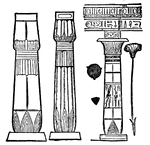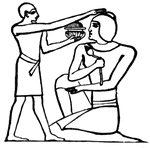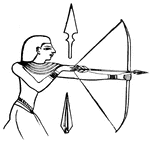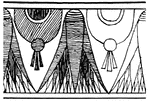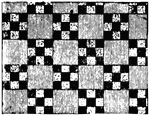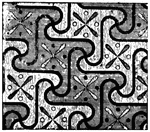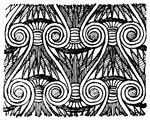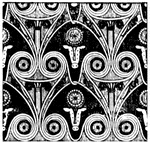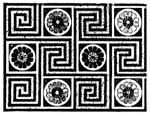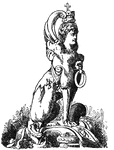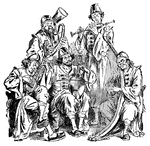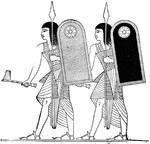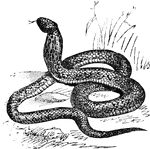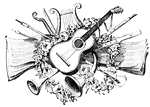
Instrument grouping
A grouping of musical instruments including a guitar, lyre, and horns together with a festoon and sheet…

Archimedes' Screw
A machine used for lifting water, thought to have been invented by Archimedes in egypt for draining…

Liquid Barometer
The liquid barometer is an instrument used in measuring atmospheric pressure. The liquid barometer uses…

Ancient Egyptian Harps
A harp is a stringed instrument of triangular form. The sculptures and ruins of the Egyptians and Syrians…

William Hicks Pasha
An English officer, commanding an Egyptian expedition against the Madhi in the Soudan, who perished…

Papyrus
The papyprus is a frequent form in Egyptian ornament. Its straight, stiff triangular stem with four…

Lotus-Palmette with Tabs
Lotus-palmette with tabs consists of a group of diverging leaves or petals springing from between two…
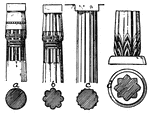
Column Types
Egyptian columns had shafts of three types: a) circular or cylindrical, b) clustered, c) polygonal or…

Osirid Pier
In several Egyptian temples there are square or rectangular piers fronted with colossal sculptured figures…
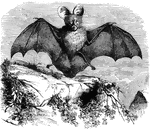
Egyptian Slit-Faced Bat
Nycteris Thebaica. "In this genus both the tail and the interfemoral membrane are greatly developed,…

Federal Prisoners
"Federal cavalry covering the escape of Federal prisoners from Libby Prison, Richmond, Va. The feeling…

Band at Giant's Feet
The Lilliputian band plays for Gulliver after he is pardoned from a conviction.
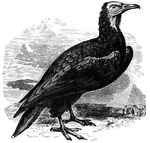
Egyptian Vulture
N. percnopterus, common to Africa, sometimes found in Southern Europe and in Asia. Males and…
Excerpt from the Rosetta Stone
"In 1799, the Rosetta Stone was found and gave the first key to the reading of hieroglyphics. On this…

Rosetta Stone Sample
"In 1799, the Rosetta Stone was found and gave the first key to the reading of hieroglyphics. On this…
Rosetta Stone
"In 1799, the Rosetta Stone was found and gave the first key to the reading of hieroglyphics. On this…

mummy
"Mummy. Another striking religious custom was the embalming of the dead. It was thought that the soul…
Sowing
"Egyptian Sowing. The people were mainly agricultural, but employed rude methods of cultivation. In…

Acacia
"An Egyptian tree; the bark and pods are frequently used in tanning and the aqueous extract of the wood…
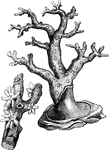
Red coral
"It appears to be confined to the Mediterranean Sea, where it grows, especially on the southern coast,…
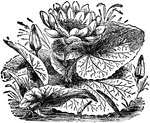
Egyptian Water Lily
"Lotus is a name given to various flowers, including several beautiful species of water lily, especially…
Organ Reed
"The Reed is the sounding part of several instruments, such as the clarionet, bassoon, oboe, and bagpipe,…
Bagpipe Reed
"The Reed is the sounding part of several instruments, such as the clarionet, bassoon, oboe, and bagpipe,…
Bagpipe Reed
"The Reed is the sounding part of several instruments, such as the clarionet, bassoon, oboe, and bagpipe,…
Bagpipe Reed
"The Reed is the sounding part of several instruments, such as the clarionet, bassoon, oboe, and bagpipe,…

Sphinx
"Sphinx is a Greek word signifying 'strangler,' applied to certain symbolical forms of Egyptian origin,…

Cardo
A hinge or pivot. The first figure, in the annexed woodcut, is designed to show the general form of…

